![]()
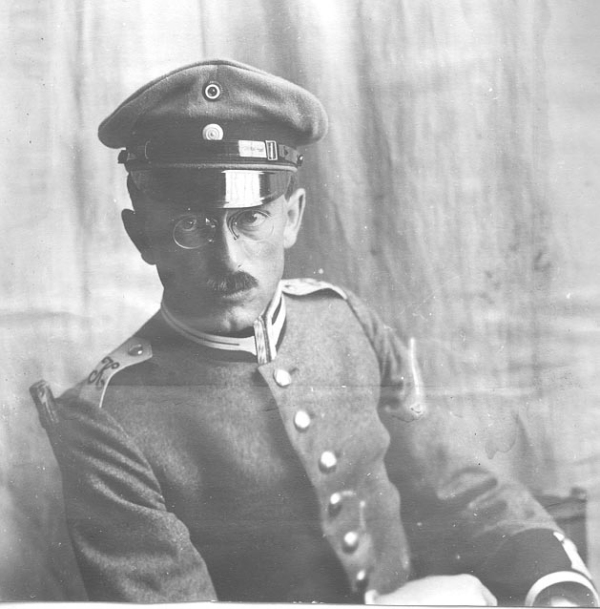
I never met my grandfather, but he was quite a guy. After receiving an engineering degree at Munich he became the development/test engineer at the Neckars-Ulm Motorcycle Company, later NSU, later absorbed by Audi. My grandmother explained that it was his job not only to engineer the hardware developments, but also to take the machines to the local woods and demonstrate to potential customers how they could jump over fences and off small cliffs, with all the performance of a good horse and more. I have a picture of him in his WWI uniform, and after the war he went into business converting war-surplus trucks to civilian use. When the supply of surplus trucks gave out, he started manufacture of automobiles called Schurichtwagen from a small factory in Pasing near Munich, Germany.
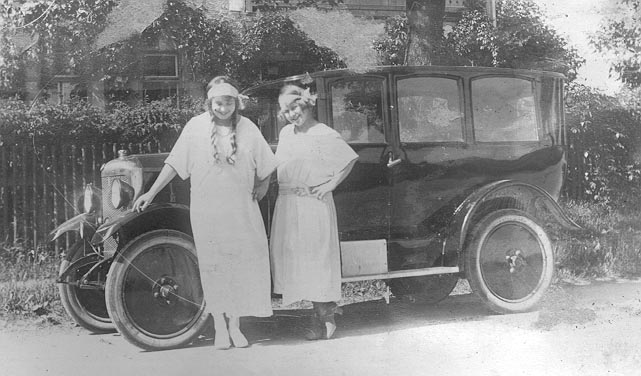
The Schurichtwagen was intended to be an inexpensive automobile for postwar Germany, but marketing was highly problematic because this was the era of extreme inflation. People would receive their paychecks and spend all the money the same day because the money would be worth only half as much by the end of the week. Thus the price schedule for the Schurichtwagen I have seen had no prices marked in, and if you wanted to purchase one you had to request from the factory a quote that was valid for the week only.
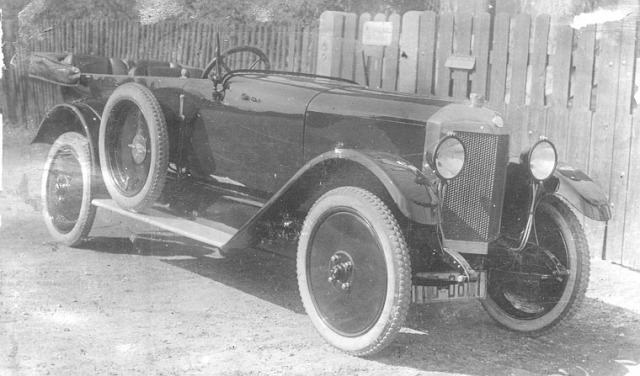
The cars were produced in various open and closed forms, and I have a picture of my mom Anneliese Schuricht and her best friend Tina Zint in front of a big sedan.
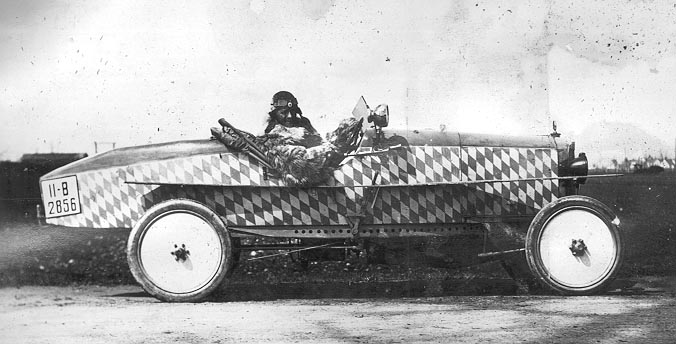
I also have a picture of my grandfather in his race car. Recall that in this time of car racing before WWI, nationalism was rampant and the European participants painted their cars by a system of international colors, where Italian was red, French was blue, British green, German silver, etc. But Pasing/Munich was in the former Bavarian Kingdom, so my grandfather adopted the blue/white check pattern seen today in the BMW logo, but the entire car is seen painted in a small blue/white checkered pattern.
Walter Schuricht, Ing, was also the author of 4 books which would be described as practical handbooks for learning the new motorcycle and automobile technologies, titled:
These books were published in Berlin by Richard Carl Schmidt & Co in the era 1923 - 26, and I have copies of all four of them. I also have what appear to be illustrations for a further volume; they are 6 signed sketches from the artist.
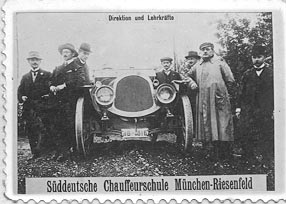
In addition, my grandfather created and operated the Sueddeutsche Chaufferschule (Southern-Germany Chauffer-School) where young men would come for lessons in the technology, law, and practice of driving an automobile.
Beyond his commitment to automotive technology, my grandfather was a real live wire. My grandmother explained that when all the boats on the lake had white cotton sails, his were red. And somewhere I have a picture of my mom, age about 18, on her motorcycle. I sometimes wonder what his life would have been like had he not lived in such difficult economic times.
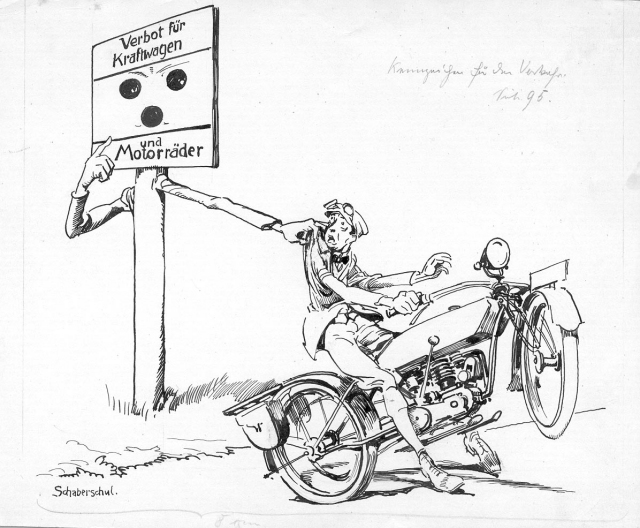
My last illustrations are the original artwork from one of his books, the one about motorcycles. In 1926, new laws regulating motor vehicles were enacted in Germany, and a revised version of his book Das Motorrad und Seine Behandlung was prepared. A few older illustrations were updated and the cartoons added. From a stamp on back it is clear that they were once in the files of "Richard Carl Schmidt & Co", and pencilled notes on the front indicate the chapters the illustrations were for; the one was called "the examination."
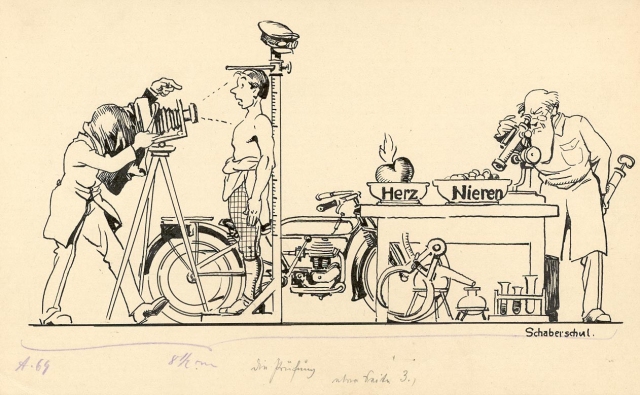
The original illustrations are all signed by Schaberschul. Max Schaberschul was a cartoon sketch artist from Dresden, well-known today for these sketches characteristic of this prewar era in Germany.
[ Main ]